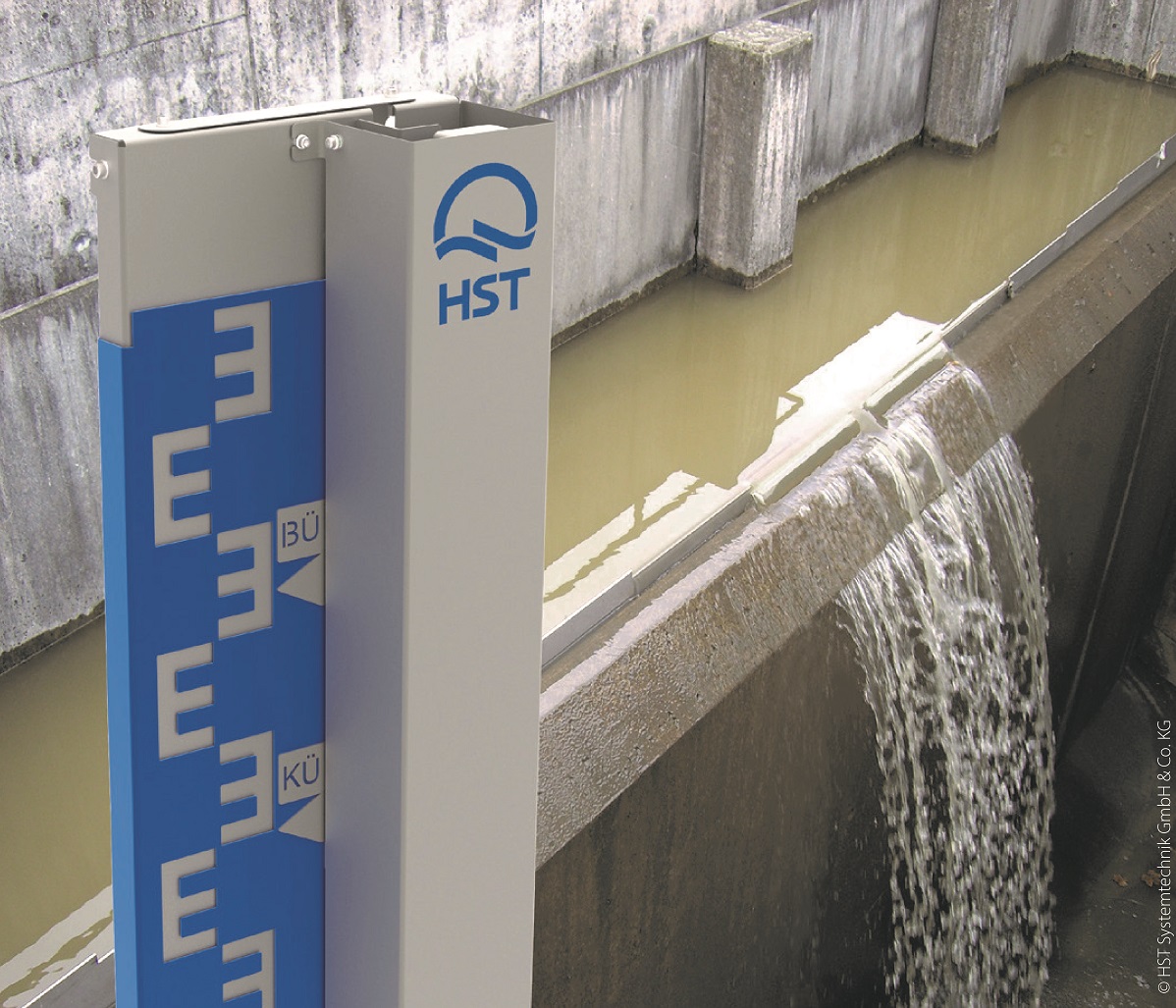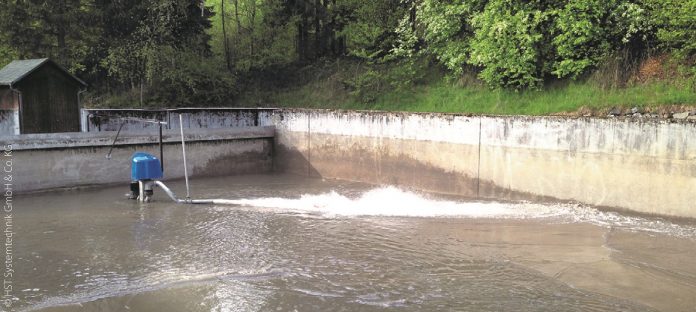For many years, automation technology, software and IT communication have formed the basis of modern equipment in the field of municipal supply and disposal infrastructure. At first, these were purely mechanical systems, usually made of steel. They were later supplemented with the first semi-automatic functions, and then there was the introduction of PLC controllers for automating and monitoring via SCADA.
Machinery and IT components are important individual components of modern digitalisation solutions. Thanks to intelligent computation algorithms and associated automation technology, operators are now able to make operational settings that are adapted to the situation and, in turn, save energy and enhance safety. In other words, the chip has been attached to steel.
However, what these solutions usually lack is a direct Internet connection or integration into a web-based networking system. In addition to integrated software components, so-called intelligent systems feature corresponding network interfaces. As such, increasingly flexible and intelligent machines evolve from the previously simple, static machines – so-called smart machines. But what does ‘smart’ mean this context? In principle, according to Porter and Heppelmann [1], smart machines are made up of three core elements:
- physical components (these are the mechanical and electronic components)
- intelligent components (these include sensors, microprocessors, data storage, control elements, software, an integrated operating system and the user interface) and
- networking components (interfaces, antennas, protocols and networks which enable the communication between the product and the cloud)
Smart machines moving into the digital World of water management
In the course of water management digitalisation, when normal equipment components are being converted to become SMART machines, IntelliSystems are forming the key interface of modern networking strategy. For example, through this, pumping stations, stormwater basins, sewage treatment plants and flood retention basins are transformed into SMART objects and in the future, they will connect with central data and service platforms via the Internet. Intelligent systems will receive additional data from the platforms in order to expand their functions and network with one another based on high-resolution environmental data.
In doing so, they will form the basic elements of highly flexible and efficient network management. The key feature of IntelliSystems is their independent functionality. Ideally, they should be connected to a web-based data and service platform, but at the moment, this is still a plan for the future. The creation of efficient platforms in the field of water management is still in the early stages of the digital transformation. Local, limited platform approaches are already the subject of various research activities; also in the field of water management [e.g. 2, 3]. In the LOCAL 4.0 project, the designing of web-based data and service platforms is an important research goal. Here, for the first time, central, multifunctional platform solutions are aimed at from a user perspective. This enables both, the central collection archiving and structuring of distributed data and the direct usage of data with new application tools. In connection with this, IntelliSystems play an important role as a data source, however, thanks to the direct web connection, they can also be supplied with new reference values in a targeted way, as a result of processed data are from the platforms. By way of example, this will be illustrated by the cleaning of stormwater basins and the increasingly demanded need for registering quantities in structures with overflows.
Conventional basin cleaning is primarily done with surge flushing devices such as sluicing tips or flushing flaps. Here, the potential energy of the stored water volume is used to produce a surge flush and in so doing, clean the bottom of the basin following a discharge event. Another possibility is the use of a jet cleaner. After the end of a rain event, the machines in the basin will be activated by the trend towards a falling water level and they will keep the surrounding water body in motion using a water jet pump. This process causes a remobilization of solids and/or deposition is prevented. When draining the storage structure, substances which are in limbo and/or held will be discharged with the flow of wastewater towards the sewage treatment plant; through this, cross contamination with bodies of water is avoided.
Previous constructions have mostly been based on an expected maximum contamination level, so that each cleaning operation takes place as if the calculated or assumed extreme event happened each time. As such, in particular, the energy-intensive jet cleaner is always operated at full capacity, regardless of the actual degree of contamination or the deposition intensity.
Advanced swivel jet cleaner and EMA system
If a swivel jet cleaner (Figure 1) is combined with camera technology and intelligent control software, a smart machine is created (e.g. the AWS swivel jet cleaner with an IntelliGrid function). The special camera detects where sediments are still on the basin floor, based on the recognition of patterns. Thus, in the next step, the flow of water is only directed to where contamination actually is. If a camera cannot be used, the operating staff are able to enter the cleaning results on a panel and document them in the system. Then, in the next cleaning operation, the jets are only active where sedimentation actually is. As such, the cleaning device can be demand-oriented and operated extremely efficiently. Through the intelligent recognition of the situation and patterns, a perfect balance can be struck between resource use and cleaning results.
Increasingly, the authorities are demanding the ability to register discharge rates and/or released quantities into the receiving waters of flow dividing structures and rain tank overflows. The particular challenge lies in the extreme range of possible outflow values. As the regulatory requirements include both the registering of very small amounts in the l/s range and outflows in the m³/s range, conventional measuring systems such as the MID or Venturi flume cannot be optimally used for this range of expected discharge quantities. In addition, there are many cases where rainwater tanks have no power supply, so systems that function without electricity are required in order to carefully record and archive all events. The so-called EMA system (EMA = electronic quantity evaluation) has been developed for this purpose (Figure 2).

A variable mechanical design is used for highly accurate continuous measurement. The so-called EMA panel with E-scale optics serves to record, protect and precisely adjust the sensors that are used. It also includes a digital benchmark for automatic calibration. All raw data that is gathered for calculating the amount is fully accessible to the operator. Due to the transparency and availability of original data for the operator, this system is now widely used. The EMA controller ensures high-resolution recording and archiving of measured data according to the delta event method with a checking and calibration function. The connection to a web-based SCADA system enables real-time monitoring and the corresponding reporting of data.
As representatives of IntelliSystems, both applications represent a new generation of IT-based product solutions in the field of water management. They are particularly well suited to operators of water management infrastructure as a first step towards digitalisation. This is because their implementation does not necessarily require a higher-level digital strategy or the installation of a comprehensive platform solution for the gathering of data.
However, these IntelliSystems can also be connected to future web platforms at a later date as an essential component of a digital organisation strategy. On the operational side, the required expertise to implement the IntelliSystems is manageable, so that even operational staff who are not so IT oriented can operate these systems after a short training session. At the same time, a certain degree of curiosity is generated among technically oriented staff, most of whom are young. Both support the acceptance of the first steps towards a ‘digital’ future. This can be built upon and more easily implemented for future digital adaptation at an organisational level.
Contact:
Dipl.-Ing. Thomas Grünig
Managing Director / International Sales
Products, Systems and Solutions
Thomas.Gruenig@hst.de
Phone/Fax: +49 291 9929-41 / +49 291 7691
Mobile: +49 175 22520-41
Authors:
Dipl.-Ing. Günter Müller-Czygan
Head of machinery and equipment Objects / Municipal 4.0
Products, Systems and Solutions
Guenter.Mueller-Czygan@hst.de
Phone/Fax +49 291 9929-44
Christopher Becker
Product- and Project technician
Products, Systems and Solutions
Christopher.Becker@hst.de
Phone/Fax: +49 291 9929-53









